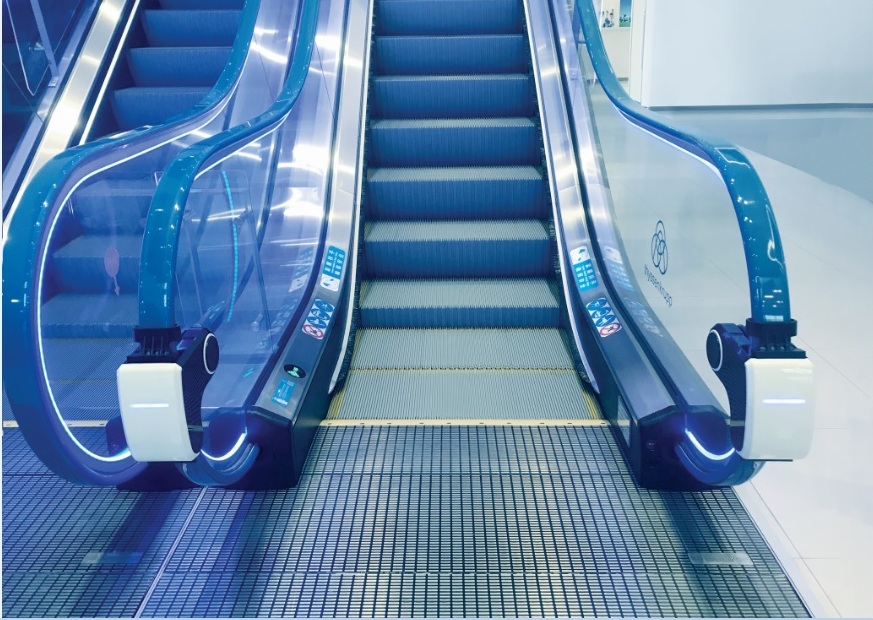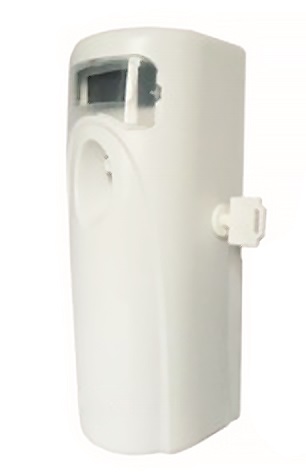 The pandemic has positively changed the human behaviour towards hygiene as maintaining sanitation becomes an integral part of our daily lives. This changed attitude needs also to be extended to elevators—the most essential mobility equipment in urban areas. Embracing innovative technology like contactless solutions coupled with remote management will go a long way in bringing the elevator commute experience to the “new normal”, notes Manish Mehan, CEO & MD, thyssenkrupp Elevator (India).
The pandemic has positively changed the human behaviour towards hygiene as maintaining sanitation becomes an integral part of our daily lives. This changed attitude needs also to be extended to elevators—the most essential mobility equipment in urban areas. Embracing innovative technology like contactless solutions coupled with remote management will go a long way in bringing the elevator commute experience to the “new normal”, notes Manish Mehan, CEO & MD, thyssenkrupp Elevator (India).
The present pandemic has transformed the way citizens commute and access public transport, cafes, grocery shops and critical infrastructure like elevators and common passages. While there is a new found awareness and consciousness among citizens and businesses alike, elevating health and safety standards for better quality of life is important. With unlock 6.0 setting new guidelines in relaxing restrictions, declining transmissibility and unpredictable impact especially in public commute is critical. This calls for a stronger and more vigilant measures like sanitizing and touch-free access to reduce the infection risk and drastically flatten the COVID-19 curve.
Frequently contacted surfaces demand elevators and escalators are sterile and remain germ-free.
The rapid urbanization in India is propelled by the rising urban population, growth in infrastructure projects and key sectors that are making India home to some of the fastest growing cities in the world. In 1901, only one in ten Indians lived in the city. By 2030, the UN estimates that more than 40 per cent of Indians could already be living in megacities. And two of the ten largest cities in the world are Indian already today – Delhi and Mumbai. This mass urbanization demands millions of people should have access to agile and environment friendly solutions that underscore highest safety guidelines for urban mobilization. The opportunity to create smarter and more connected infrastructures will not only improve functionality but also put emphasis on using resources more effectively.
What was once considered as a daily travel routine, elevators have now gained tremendous spotlight in the times of the pandemic
Elevators are among the most essential means of mobility equipment in urban regions. A topic of intrigue, elevator commute was once considered as a daily travel routine however has now gained tremendous spotlight in the times of the pandemic. Passengers today are increasingly becoming aware and familiar of their surroundings as against concentrating on their mobile devices while commuting in the elevator. From enclosed space to having close proximity with fellow passengers, combating COVID-19 demands precautions that are in addition to wearing mask, washing hands and maintaining safe distancing. Embracing innovative technology like contactless solutions coupled with remote management will go a long way in bringing the elevator commute experience to the “new normal”.

Frequently contacted surfaces demand elevators and escalators are sterile and remain germ-free with solutions like cleaning surfaces regularly, touchless technology, and antimicrobials sanitation solutions. As the virus or other bacteria can be transferred through hand contact with elevator buttons or escalator handrail, providing good hygiene practices and protection is critical:
 Aerosol Disinfectant: Automated disinfectant is programmed to operate during working hours to sanitize the elevator cabin. It helps to regularly deliver a safe antiviral and antibacterial wholly-enclosed space so that passengers get a well-maintained, clean and secure environment all the time.
Aerosol Disinfectant: Automated disinfectant is programmed to operate during working hours to sanitize the elevator cabin. It helps to regularly deliver a safe antiviral and antibacterial wholly-enclosed space so that passengers get a well-maintained, clean and secure environment all the time.
Air Purifier: The cabin air purifier ensures proper disinfection technology to sanitize and purify cabin air and walls. Innovations like UV photo catalyst and Germanic slow-released molecules can effectively eliminate 99% of bacteria and harmful pathogens from the area. Moreover, such solutions comes with biological recognition technology that can successfully recognize whether there are passengers on board. This ensures that the elevator is disinfected before every service to safeguard all passenger’s health to the greatest extent.
Infrared Thermal Camera: Armed with unobtrusive infrared thermal camera, the cabin wellness solution monitors each passenger’s body temperature as they enter the cabin. This in response triggers an alert mechanism that is designed to notify the building management to track and notify passengers who may be unwell.
Escalator UV Sanitizing Unit: Escalator handrail is one of the highest risk surfaces as it is touched by maximum passengers. To make handrails free from any bacteria and to prevent disease transmission, high-intensity UV sanitizing unit can be installed to automatically sanitizes every inch of the handrail to make it safe during every pass
Touch-free elevator calling solutions: Multiple solutions that deliver contactless or zero-touch solutions like active IR, proximity sensor-based solution, Bluetooth and QR code scanner-based solution using smartphones, IoT and voice recognition solutions can seamlessly elevate passenger’s safety and convenience
The pandemic has positively changed the human behaviour towards hygiene as maintaining sanitation becomes an integral part of our daily lives. Especially in high rise building and large public infrastructure, taking steps may not be the most feasible option or commute for physically challenged people to carrying heavy loads, elevator manufacturers are deriving new age technologies and protocols that will enable effective risk management and seamless experience to passengers. Whether through surface contact or through air, the various modes of transmission, elevator equipment manufacturers are working towards innovative measures to enable passengers feel safer during their commute.


